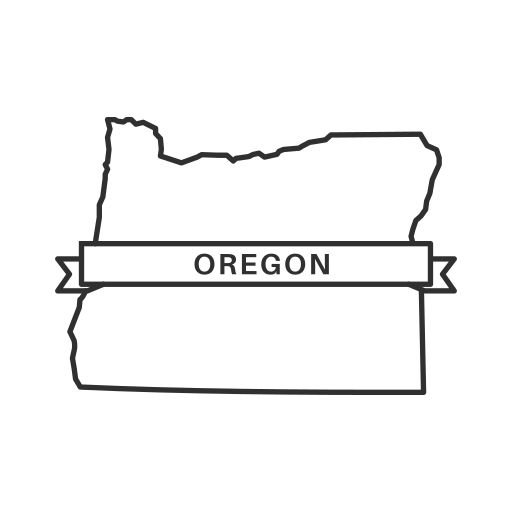Oregon Agriculture Statistics 2023: Facts about Agriculture in Oregon reflect the current socio-economic condition of the state.

LLCBuddy editorial team did hours of research, collected all important statistics on Oregon Agriculture, and shared those on this page. Our editorial team proofread these to make the data as accurate as possible. We believe you don’t need to check any other resources on the web for the same. You should get everything here only 🙂
Are you planning to start an Oregon LLC business in 2023? Maybe for educational purposes, business research, or personal curiosity, whatever it is – it’s always a good idea to gather more information.
How much of an impact will Oregon Agriculture Statistics have on your day-to-day? or the day-to-day of your LLC Business? How much does it matter directly or indirectly? You should get answers to all your questions here.
Please read the page carefully and don’t miss any words.
On this page, you’ll learn about the following:
Top Oregon Agriculture Statistics 2023
☰ Use “CTRL+F” to quickly find statistics. There are total 10 Oregon Agriculture Statistics on this page 🙂Oregon Agriculture “Latest” Facts
- About 2,000 varieties of soil can be found in Oregon.[1]
- 30% of Oregon’s total sales came from livestock and poultry.[1]
- 80% of Oregon’s agricultural products were exported, about 33% of the country’s exports.[1]
- Oregon accounted for 69% of crops from its total sales.[1]
- Eleven thousand six hundred sixty-two farms in Oregon, with 2.9 million in sales in 2017, or barely 0.1% of all farms, sold less than $1,000 in agricultural goods.[1]
- 8% of Oregon’s farms had sales between $100,000 and $500,000; these businesses accounted for 13% of the state’s 666 million sales in 2017 and 2,844 farms in the state.[1]
- 13% of Oregon’s GDP came from agriculture, accounting for $2.57 billion in exports and $5.01 billion in production.[1]
- Oregon’s family-owned and operated farms and ranches accounted for 96.7% of the state.[1]
- The COVID-19 virus severely damaged Oregon’s economy, including the agriculture sector, with over 90% of firms in the state reporting negative effects. Small business pulse survey by the U.S. Census Bureau.[2]
- According to a survey by Oregon State University, 12% of farms in Oregon, which is more than twice the national average, participate in direct-to-consumer marketing, with sales of over $53 million coming from an estimated 4,252 farms in 2015.[1]
Also Read
How Useful is Oregon Agriculture Facts
One of the most useful aspects of Oregon agriculture facts is their ability to shed light on the economic impact of farming in the state. Agriculture is a major industry in Oregon, contributing billions of dollars to the state’s economy each year. By examining key facts and figures, we can better understand the role that farming plays in supporting local communities and driving economic growth.
In addition to economic impacts, Oregon agriculture facts can also provide insight into the state’s diverse agricultural landscape. From apples and pears in the Willamette Valley to onions and potatoes in the Columbia Basin, Oregon is home to a wide array of crops that thrive in its unique climate and soil conditions. By studying these facts, we can appreciate the rich tapestry of agricultural products that are grown and harvested throughout the state.
Furthermore, Oregon agriculture facts can help us better understand the challenges and opportunities facing farmers in the state. From water scarcity and climate change to labor shortages and market fluctuations, farmers in Oregon face a host of complex issues that can impact their livelihoods. By delving into the facts and figures, we can gain a more nuanced understanding of the obstacles that farmers must overcome and the innovative solutions they are developing to succeed in today’s rapidly changing agricultural landscape.
Beyond their practical utility, Oregon agriculture facts can also serve as a source of inspiration and pride for the state’s residents. Oregon has a rich agricultural heritage that stretches back generations, with families passing down farming traditions and techniques from one decade to the next. By exploring these facts, we can connect with the deep-rooted sense of passion and commitment that drives farmers to work tirelessly to produce the high-quality products that we enjoy on our tables every day.
Ultimately, Oregon agriculture facts are a powerful tool for fostering a sense of community and connection among all those who have a stake in the state’s farming industry. By sharing and discussing these facts, we can deepen our appreciation for the hard work and dedication of Oregon’s farmers and cultivate a greater awareness of the vital role that agriculture plays in our daily lives.
In conclusion, Oregon agriculture facts are a valuable resource that can provide valuable insights into the economic, social, and environmental aspects of farming in the state. By exploring these facts and engaging with them thoughtfully, we can both support the state’s agricultural community and deepen our own understanding of the rich tapestry of crops and products that are grown and harvested in Oregon. It is essential that we continue to celebrate and promote Oregon agriculture facts as a vital part of our shared heritage and future prosperity.
Reference
- oregonfb – https://oregonfb.org/about/oregon-agriculture/
- oregon – https://sos.oregon.gov/blue-book/Pages/facts/economy-overview.aspx
